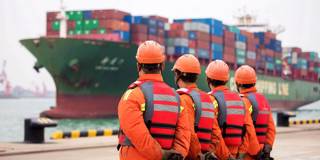Because the United States is the world’s biggest economy, most countries have to accommodate America’s trade demands in some way. In a similar vein, a future US government could use import tariffs, or the threat of them, to push other countries to reduce their carbon dioxide emissions more sharply.
CANBERRA – As Australia heads toward a federal election on May 18, the national debate on cutting carbon dioxide emissions is heating up. Yet the discussion highlights the limits of what Australia or any other individual country can do to combat global warming. Rather, the world must step up its collective efforts to tackle climate change. And, strange as it may sound, US President Donald Trump’s aggressive trade policies could point to a way forward.
In Australia, the opposition Labor Party wants the country to reduce its greenhouse-gas emissions by 45% relative to their 2005 level by 2030. But achieving this lofty goal would impose high costs on Australians in terms of foregone income and actual taxes – estimated by economist Brian Fischer to be AUD10,000-20,000 ($7,000-14,000) per capita over a decade. Even if Australia manages to cut emissions by this amount, the overall impact would be small, because the country accounts for less than 2% of the global economy.
The Labor Party’s claim that the benefit of the plan would be fewer floods, hurricanes, landslides, and other natural disasters is only half true, because Australian actions alone will not have much effect on the frequency and severity of such events. Enough other countries would have to cut their own greenhouse-gas emissions further to make a difference.

CANBERRA – As Australia heads toward a federal election on May 18, the national debate on cutting carbon dioxide emissions is heating up. Yet the discussion highlights the limits of what Australia or any other individual country can do to combat global warming. Rather, the world must step up its collective efforts to tackle climate change. And, strange as it may sound, US President Donald Trump’s aggressive trade policies could point to a way forward.
In Australia, the opposition Labor Party wants the country to reduce its greenhouse-gas emissions by 45% relative to their 2005 level by 2030. But achieving this lofty goal would impose high costs on Australians in terms of foregone income and actual taxes – estimated by economist Brian Fischer to be AUD10,000-20,000 ($7,000-14,000) per capita over a decade. Even if Australia manages to cut emissions by this amount, the overall impact would be small, because the country accounts for less than 2% of the global economy.
The Labor Party’s claim that the benefit of the plan would be fewer floods, hurricanes, landslides, and other natural disasters is only half true, because Australian actions alone will not have much effect on the frequency and severity of such events. Enough other countries would have to cut their own greenhouse-gas emissions further to make a difference.